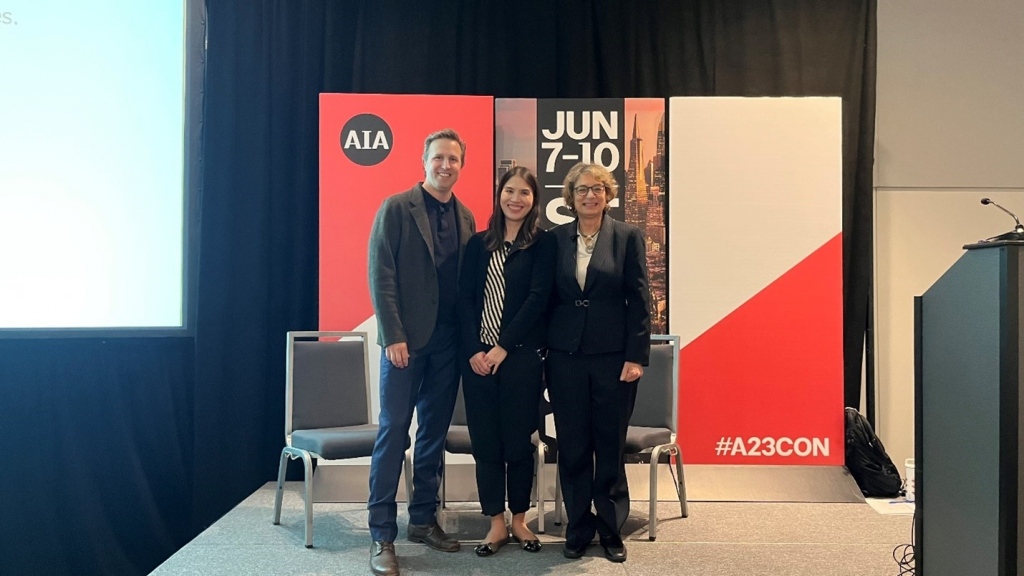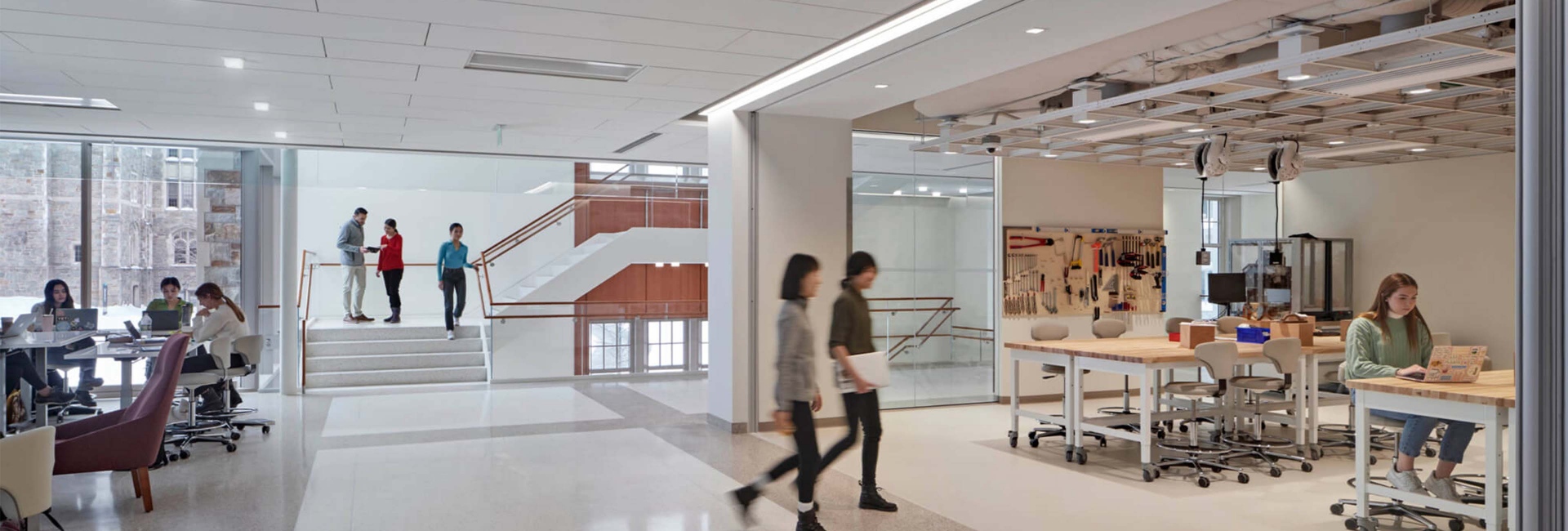Why are institutions investing in interdisciplinary academic buildings?
What are their expectations?
How do we evaluate the outcomes?
These are the questions that intrigued us at the A’23 session ‘Interdisciplinary Academic Buildings Research and Design”. Diana Tsang and Tom Simister collaborated with Laura Steinberg, Siedner Executive Director of the Schiller Institute at Boston College to explore them from both an academic and a design perspective.
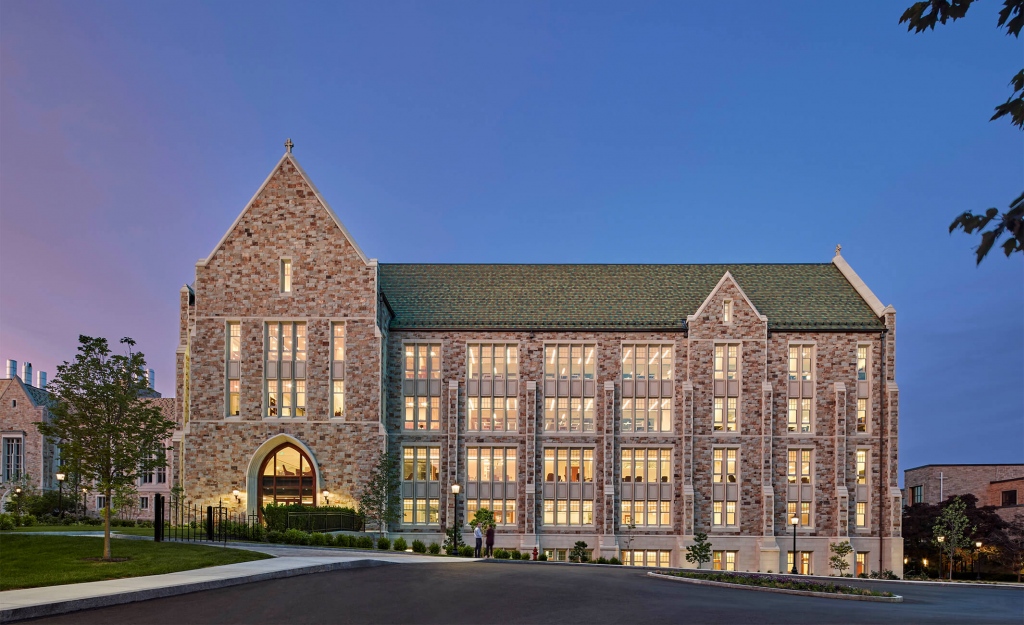
In preparing for this session, our discussions about interdisciplinary buildings evolved into a rewarding collaboration between the Schiller Institute and PAYETTE. We ended up developing a method for post occupancy surveys that we are excited to prototype and share with our industry peers. At a time when the value of physical space is being questioned, architects need tools to measure outcomes.
A couple of data points informed the discussion. First, the Schiller Institute presented lessons learned from a workshop they hosted with ten R1 research institutions, specifically looking at emerging best practices of interdisciplinary research buildings, by interviewing institutional leaders. The full study, which will appear in the Journal of Research Administration, sheds light on who leads interdisciplinary academic buildings, the challenges these leaders face and the buildings’ broader aims and effectiveness.
Next, we presented findings from the Schiller Institute’s analysis of PAYETTE’s Post Occupancy Evaluations using a method called structural topic modeling. This revealed that despite interaction being an incredibly important topic in assessing academic connections among our buildings, it is not measured nearly enough.
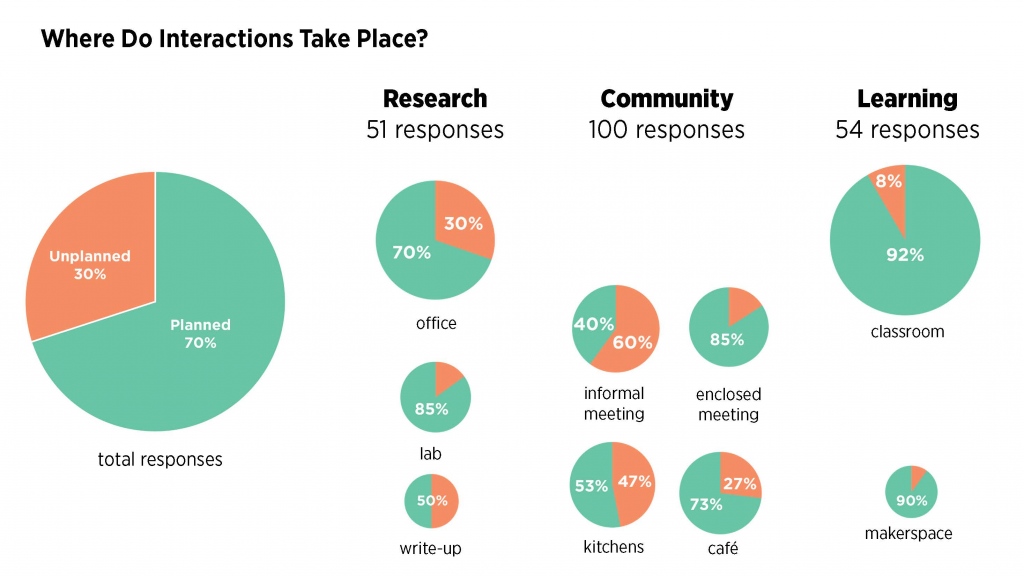
Using the newly opened 245 Beacon Street at Boston College as a case study, we analyzed the key priorities during the planning and design process. The audience participated in small groups to discuss topics including:
- Shared Resources
- Transparency and Spaces for Interaction
- Unknown Occupants and Needs
- Workplace Privacy vs. Proximity.
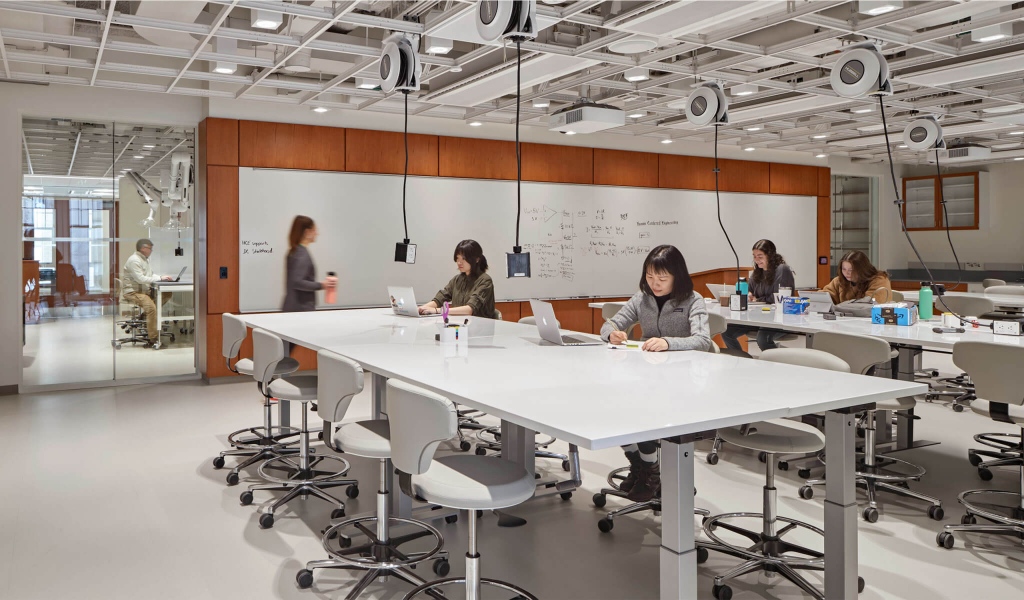
Two surveys provided preliminary understanding of the occupants at 245 Beacon, what draws them into the building and what brings them together. One survey looked at what students are utilizing the building and why they are there. The other survey focused on faculty interactions in the building, and how the building can play a role in fostering collaboration opportunities.
A lively discussion followed with the entire audience reviewing a set of proposed questions that can be used to conduct post occupancy evaluations for interdisciplinary academic buildings. Some of the feedback received included the challenge of establishing baselines for comparison.
We certainly hope that this discussion can continue beyond A’23. By having an open dialogue and collecting more data, together we can understand both our own work as architects and help our clients understand their goals and management of interdisciplinary academic buildings.
The full presentation, proposed post-occupancy evaluation questions as well as the workshop study by the Schiller Institute are available here.
If you want to share any comments with Tom, Diana and Laura, or participate in an ongoing group to gather and share POE results,
Please email: schiller.institute@bc.edu or tsimister@PAYETTE.com or dtsang@PAYETTE.com
